Your Guide to the Best Tie Down Straps
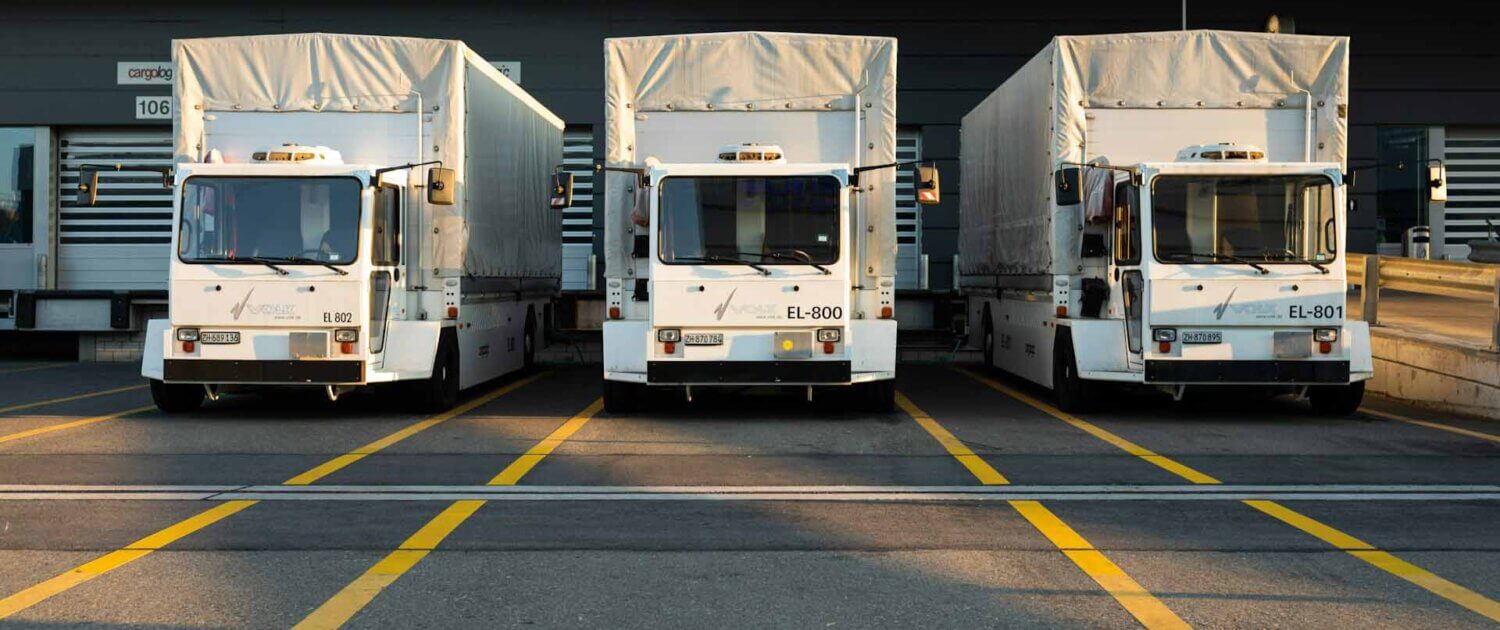
- What Are Ratchet Straps?
- Applications of Ratchet Straps
- Subtypes of Ratchet Straps
- Pros and Cons of Ratchet Straps
- How to Produce Ratchet Straps?
- How to Identify the Quality of a Ratchet Strap?
- How to Calculate the Webbing Weight?
- The Material of Ratchet Mechanism
- What Are Cam Straps?
- Applications of Cam Straps
- Pros and Cons of Cam Straps
- What Are Bungee Cords?
- Considerations of Using Bungee Cords
- Safety Tips for Using Tie Down Straps
- FAQs about Tie Down Straps
Safety has always been a top priority and a high-profile topic in the transportation industry. In 2023, there will be 3.5 million truck drivers in the USA to transport the cargo from one place to another, they need to choose the right tie down straps to secure the cargo during transportation to ensure a safe journey.
There are a variety of types of tie down straps in the market, they are designed to fit different needs. Whether you need to move furniture from one city to another or transport machinery from one country to another, you will need to find the proper load straps to fix the cargo on your vehicle.
In this blog, we will talk about a variety of types of tie down straps, including their features, characters, applications, and considerations that will guide you to find the best type to meet your request.
Tie down straps are essential tools in the transportation industry, no matter whether you are running a trucking fleet business, or you are a shipping company, they are designed in different types to use in the pickup truck, trailer, or even within a shipping container. They will secure the loads to prevent shifts or dislodgments during transportation and make sure when your cargo reaches the destination, they are still in good condition.
The primary purpose of using tie down straps is the tension and restraint provided by them. They can effectively hole the items to against the force generated during transportation, especially when you face a sudden lane change, sudden turn, sudden stop, or bad weather conditions.
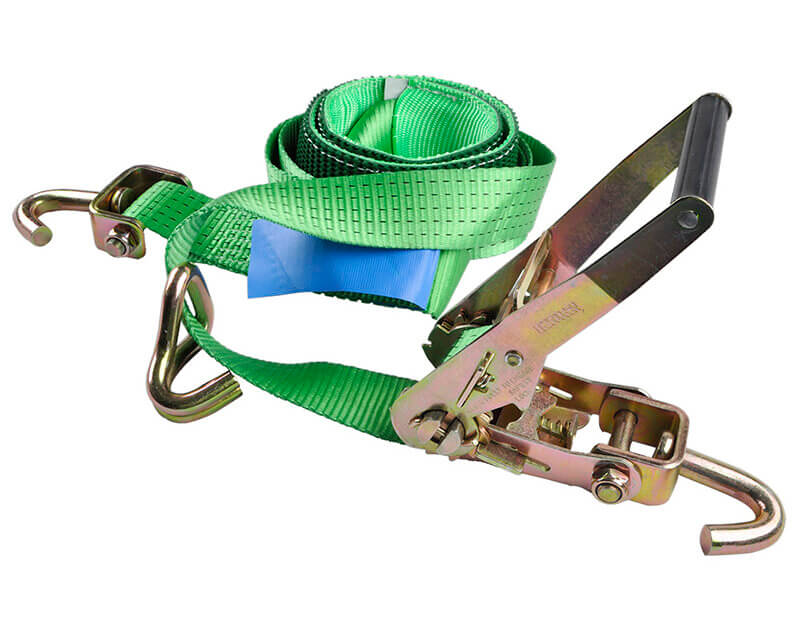
Ratchet Straps
Ratchet straps are the most commonly used tie downs for cargo movement. They mainly consist of a ratchet mechanism, polyester webbing, and an end fitting, they can vary in different types to secure loads in different applications.
Applications of Ratchet Straps:
Securing Heavy Machinery: Ratchet straps are widely used to secure heavy machinery to avoid movement during transit.
Furniture and Appliance Moving: In our daily life when moving furniture and appliance, the moving company always use ratchet straps to secure the items to avoid cargo shifting or damage during transportation.
Construction and Cargo Transportation: Ratchet straps are also the most frequently used securing tool to fix the construction materials on the trucks.
Subtypes of Ratchet Straps:
Lashing Straps:
Lashing straps are used to secure lighter items with quick and efficient securing requests, and the working load limit ranges from 200 to 500 pounds. They are mainly used to secure luggage or bags on the car roof rack, bundle camping gear, rolled-up blankets, and sports equipment, hold a stack of boxes, fasten lumbers or pipes, etc.
Tarp Straps:
Tarp straps like what it’s named, this type of straps is specifically designed for securing tarps on the truck. Depending on the different load’s weight, the working load limit of the strap normally ranges from 200 pounds to 1,000 pounds on the market. These straps are also waterproof and fix the tarp in place tightly, protecting the cargo from being wet in bad weather conditions.
Motorcycle Tie Down Straps:
Motorcycle tie down straps normally consist of pairs of soft loops and motorcycle ratchet straps, their working load limit is normally ranging from 500 pounds to 2,000 pounds. They can not only secure the motorcycle, but also secure the bike, kayaks, boats, watercraft, small tractors, lawnmowers, ATVs, dirt bikes, or other off-road vehicles. The soft loop tie down straps are used to connect to the handlebar to prevent scratches or dents.
E Track Straps:
E Track Straps are designed for working with E Track Systems, mainly used in trailers and trucks, their working load limit are ranging from 500lbs to 2,000lbs. They can used to secure various cargo with their adjustable features. As long as your cargo weight can match the loading capacity of T Track Ratchet Straps, they can secure a wide range of products.
Winch Straps:
Winch straps are always regarded as heavy-duty straps, they always work with the winch system and secure various items on the flatbed truck and trailer, only if the working capacity of winch straps can cover the weight of cargo. The common working capacity of winch straps ranges from 3,333 lbs to 6,670 lbs.
Pros and Cons of Ratchet Straps:
Pros:
- Precisely and firmly secure the cargo
- Wide range of applications for different cargo
- Durable and suitable for both light-duty and heavy-duty cargo
Cons:
- Need more time to secure items compared to some other easy to use straps.
- For some users, the ratchet mechanism is complex for them to use.
How to Produce Ratchet Straps?
- Based on the strength request of ratchet straps, select appropriate ratchet mechanism materials, such as high-strength alloy steel or aluminum alloy.
- Forming: Shape the head of the ratchet using stamping, forging, or casting techniques into the required form, this can vary based on the type and size of the cargo being secured.
- Machining: The formed ratchet requires additional machining, such as drilling or threading, to accommodate the cargo straps.
- Surface treatment: Such as painting, powder coating, or plating to enhance its corrosion resistance and appearance.
- Testing: Testing the hardware strength to see if it can meet the request of your order.
- According to the customer’s requests, weave the webbing into different widths and strengths.
- Coloring: Dyeing the webbing as per specifications.
- Testing: Test the webbing to see if the strength meets your customer’s request.
- Assembly: The webbing of the tie-down strap is assembled with other metal components to complete the assembly of a tool.
- Testing: Testing the complete set of ratchet straps to see if they can meet your order request.
How to Identify the Quality of Ratchet Straps?
- Ask about the webbing material: The material of webbing is generally polyester or polypropylene. Typically, polyester material is better than polypropylene, and the materials we export are made of polyester.
- Ask the overall weight: The total weight of the ratchet strap relates to the amount of materials used. More materials used will result in a heavier overall weight, correlating with increased strength.
- Ask about the material of metal components: The quality of metal components varies from iron sheet < ordinary steel sheet < 45# steel < quenched 45# steel.
- Ultimate method: Perform tension strength testing. This method is more challenging unless you have a tension testing machine. However, this method is the most definitive way to assess the actual quality of a tensioner.
How to Calculate the Webbing Weight?
As we know, the heavier the weight of the webbing, the higher its strength. But do you know how to calculate the weight of the webbing? Let me tell you how to calculate it.
The weight of the webbing refers to the weight per unit area, usually expressed in grams per square meter (g/m²). The formula to calculate the weight of the webbing is as follows:
The weight (g/m²) = Webbing length (m) × Webbing width (m) × Webbing thickness (m) × Webbing density (strands/cm) × Webbing weight coefficient.
The webbing length, width, and thickness refer to the actual dimensions of the webbing.
The webbing density refers to the number of yarns per centimeter on the webbing.
The webbing weight coefficient refers to the factor determined by the material and yarn density of the webbing.
The Material of Ratchet Mechanism
Ratchet Mechanism is a device used to maintain tension in chains, webbings, or ropes. Its main components are usually made of sturdy materials to ensure durability and reliability. Here are some common materials that might be used in manufacturing ratchet mechanisms:
Metal Alloys: The main body of most ratchet mechanisms is often made from metal alloys such as cast iron, aluminum alloys, steel, and others. These materials typically possess sufficient strength and rigidity to withstand the tension of chains or webbings and maintain them in the required position.
Stainless Steel: Stainless steel is commonly used in making certain crucial parts of ratchets, especially in environments requiring corrosion resistance. Its anti-corrosive properties ensure prolonged use in damp or corrosive conditions.
Plastic or Polymer: Some components of the ratchet, particularly those directly in contact with chains or webbings, may utilize wear-resistant plastic or polymer materials to reduce friction and wear, consequently lowering maintenance requirements.
Spring Steel: The springs within the ratchet mechanism are often made from spring steel due to its good elasticity and fatigue resistance, ensuring long-term reliability and stability.
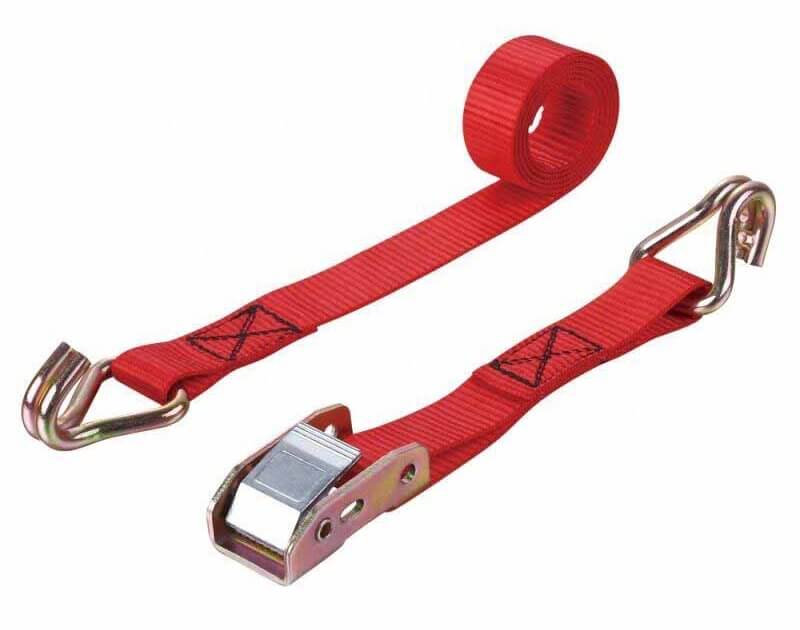
Cam Straps
Cam straps are the alternatives of ratchet straps, their working load limit ranges from 150lbs to 1,000lbs if you wish to secure the lighter loads in a quick way. They also consist of a quick-release buckle, polyester webbing, and an end fitting. The design of cam straps is to fit the need for quick tension and quick release of the lighter cargo.
Applications of Cam Straps:
For Travel Use: Cam straps are widely used to secure the items on the roof rack when you go out for a travel with your family. Such as securing kayaks, surfboards, bicycles, luggage, etc on the road.
For Light Weight Vehicle Transport: Moving the lightweight vehicle from one place to another, you will need the cam buckle straps to secure the motorcycles, ATVs, or dirt bikes on trailers or trucks.
For Moving Company Use: Moving companies use the cam buckle straps quite a lot since they are easier to use than the ratchet and can help them save time when packing the furniture, box, or appliance.
For Boating and Marine Use: Cam buckle tie down straps are also frequently used to secure covers, tarps, or lightweight equipment on boats to avoid boat cover flapping or item sliding.
For Outdoor Use: These light duty straps can also secure tents, tarps, or gear to roof racks or backpacks.
Pros and Cons of Cam Straps:
Pros:
- Quick Release and Adjustment: When you are looking for rapid tension and release, cam buckle straps are your best option for effectiveness and stability.
- Minimal Slippage: Once secured, the cam mechanism will provide your item with a reliable hold with minimal slippage.
- Friendly to Vulnerable Loads: The feature of the cam buckle makes the cam buckle tie down straps more friendly to vulnerable loads than ratchet tie downs.
- Lower Cost: If the working capacity of the cam buckle strap could cover the weight of your cargo, the cost will be lower than using a ratchet strap.
Cons:
- Load Capacity: Cam buckle tie down straps fit for lightweight cargo securement. For heavier and larger loads, you need to use a ratchet tie down strap.
- Limited Adjustability: Unlike the ratchet mechanism, the adjustability of the cam buckle is limited.
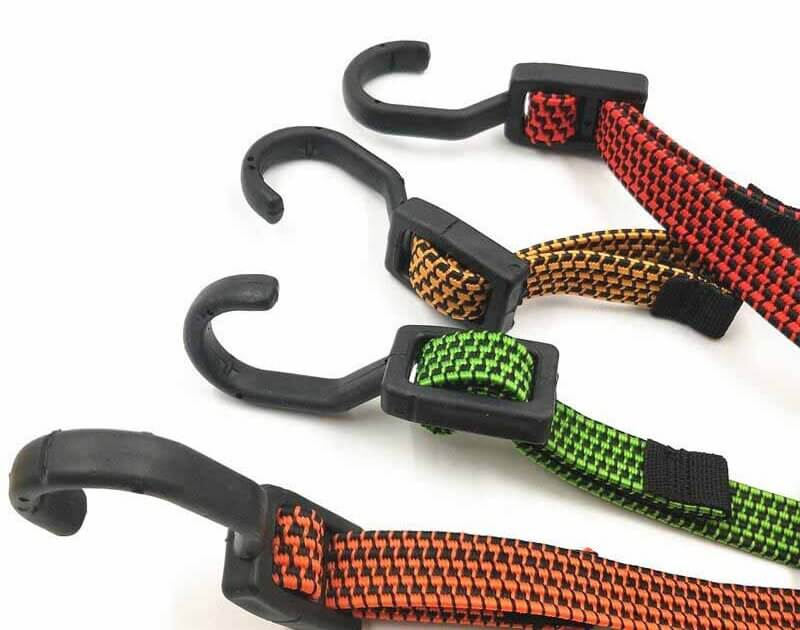
Bungee Cords
Bungee cords are not traditional straps, they are made of rubber or elastic material enclosed within a fabric or synthetic sheath, known as their flexibility and elasticity. They are also suitable for lighter loads, such as those used to secure camping equipment and luggage.
Ideal Uses for Bungee Cords:
- Lighter Loads and Flexibility: Bungee cords are very flexible for lighter loads and items, their elasticity can absorb shocks and vibrations when you transport camping gear, sports equipment, or smaller household items on the road.
- Versatile Applications: The cords can be used to secure various cargo in different sizes and shapes.
Considerations for Using Bungee Cords:
Load Weight: Bungee cords only can be used for lighter loads. If used for heavier items, it may cause overstretch or breakage.
Hook Attachment: Make sure the anchor point can be connected with the hook at the end of the cord.
Avoiding Abrasions: Based on different application scenarios, you need to pay attention to some loads that may have sharp edges and may damage the cord’s sheath.
Safety Tips for Using Tie Down Straps
Proper Inspection Before Use:
Check for Damage: Before every use, you need to check if any signs of cuts, wears, tears, mildew, color fading, or rust on the tie down straps (webbing, buckle, and hook). If any, don’t use it anymore to compromise the load security, you need to buy a new one.
Verify Working Condition: Check the function of the ratchet and buckle mechanism, if they can work smoothly and securely.
Correct Techniques for Securing Loads:
Proper Placement: Place the strap in the right position to ensure equal weight distribution. Don’t twist the strap and need to avoid the shape edge of loads to weaken the hold.
Tension Evenly: Gradually and evenly tension the strap, avoid over tightening to damage the cargo or under tightening to cause slippage during transportation.
Tips for Avoiding Common Mistakes:
Choose Correct Attachment: The tie down strap attachment must be suitable for the anchor point on the vehicle. Improper attachment will cause item slippage during transit.
Secure Excess Straps: The excess strap must be secured properly. Loosen ends will cause damage to the cargo or other vehicles on the road.
FAQs About Tie Down Straps
Q: What are the easiest tie down straps to use?
A: Securing lighter items that don’t require extremely high tension, cam buckle straps must be the easiest tie down straps to use.
Q: What is another name for tie down straps?
A: Another name for a tie down strap is “lashing strap”, they are all used to secure cargo, equipment, and items during transportation, storage, or other various purposes. They can come in various types, such as ratchet straps, cam straps, endless straps, and bungee cords to achieve their primary function of “securing”.
Q: Is there anything better than ratchet straps?
A: Each type of tie-down has its characters and applications, and each of them can be used in their application. If you need to tie down heavier items, sturdy cargo, ratchet straps will be your first choice.
Q: How Many Tie Down Straps Do I Need?
A: We suggest using at least 2 straps. The amount of tie down straps you need to use depends on several factors: ① Size and weight of the cargo. ② Types of straps. ③ Value of load.
Q: How long should tie down straps be?
A: Normally 1.5 times of cargo length. The commonly used length of tie down straps is ranging from 6 feet to 30 feet. The factors to decide how long the straps should be are: ① Length of load. ② Number of attachment points. ③ Types of tie down methods. ④ Safety factor.
Q: Should I twist a tie down strap?
A: No, twisting a tie down strap will compromise its strength and effectiveness. When you tie down the cargo, you should ① Avoid twisting. ② Proper placement. ③ Even tension.
Q: How to use ratchet straps?
A: You may refer to this content.
Q: How to use cam buckle straps?
You can learn more about cargo securement rules at the Federal Motor Carrier Safety Administration
Ratchet straps, cam straps, and bungee cords are the most commonly used tie down straps in securing different loads, you will need to choose different strap types according to the specific application. If you are looking for load straps or want to customize your ideal straps, leave your request to us below, and we will get back to you within 10 minutes.
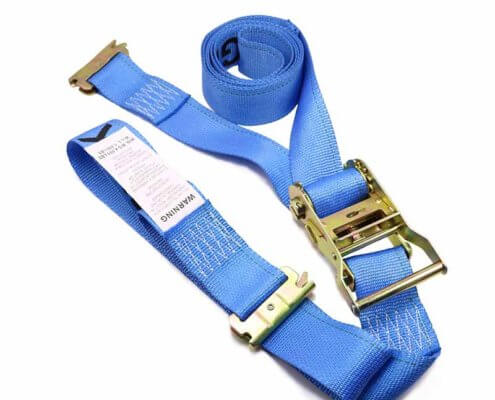
Dave Lee
Dave Lee has amassed over two decades of experience in the cargo control industry, serving as a product manager. Prior to joining Webslingness, he spent three years at a transportation company.


